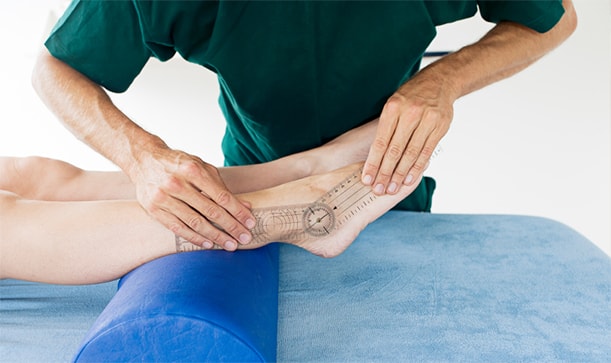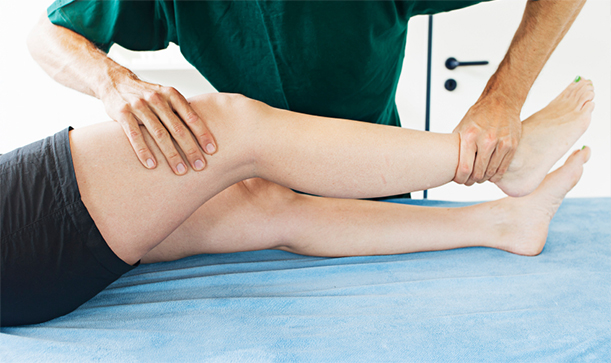CK Physiotherapy
AREAS COVERED
W7, W5, W13, Ealing, West London
57 Elthorne Avenue
Hanwell, W7 2JY
T: 020 8566 4113
M: 079 572 46185
E: info@ckphysio.co.uk
Location / Parking
We are situated in Hanwell, between Boston Manor Road and Northfields Avenue, south of the Uxbridge Road.57 Elthorne Avenue
Hanwell, W7 2JY
There are parking restrictions Mon - Fri 9-10am and 2-3pm. If you need a permit during this time please inform your therapist when you arrive. There are no parking restrictions at other times.
Opening Times
Please phone the number above during working hours to make an appointment. Our reception service will be happy to book your session.
London Underground / Bus Services
London Underground
10 min. walk from Boston Manor Tube Station.
15 min. walk from Northfields Tube Station.
Bus Service
E8, E3, E2, 207, 607, 83
Request Call Back
Our Blog
5 Physiotherapy Exercises for Tennis Elbow Rehabilitation
By: BryanKelly (Psst, View author in Google Plus) Date: Jul 18th, 2019Tennis elbow can cause a great deal of discomfort as it interferes with daily activities. Yet it's not impossible to rehabilitate. There are multiple exercises which can target the affected area, to bring forth a speedier recovery.

What is tennis elbow, and what causes it?
Tennis elbow is a painful condition known clinically as lateral epicondylitis. This condition develops from overuse of the muscles and tendons adjacent to the elbow joint.
Sometimes lateral epicondylitis develops from the vigorous extensions of the tennis game; other times, it might be provoked by some forceful hit or knock to the elbow.
Other activities might also be to blame for a case of this overuse injury, including, yet not limited to: gardening, decorating, plumbing, or playing a string instrument.
Symptoms of tennis elbow
The discomfort of this condition might manifest in the following ways:
• You might suffer from an inability to extend your arm fully. Your range of motion might be rather limited in the affected arm.
• It might present a challenge for you to grip any small object, such as a piece of jewellery or a pencil.
• The act of dressing might present special difficulties, as you struggle to bend the affected arm and lift the pieces of clothing to the proper spots.
• Twisting doorknobs and similar objects might feel impossible.
• It might be difficult to sleep in your usual position, as you wrangle your arm over the pillow, trying to achieve a comfortable balance.
• You might notice acute pain in the region beneath your elbow, throughout the day.
How is tennis elbow diagnosed?
If you've been suffering for a few days with the symptoms of tennis elbow, you'll need to give your forearms some time to rest. Discontinue all offending activities such as racquet sports and assess your progress. If you continue to suffer from the discomfort even after this resting period, you'll need to pay a visit to your GP or physiotherapist
They will perform special tests depending on the severity of your complaints. The examination will begin with a thorough assessment of the affected area, including examinations for swelling and tenderness. You'll also need to perform some simple tests, wherein you flex and bend your affected arm and fingers. Your GP or physiotherapist might also apply some pressure to the affected area, in an attempt to analyse your pain and discomfort.
More in-depth imaging tests will only be performed if your health professional suspects deeper damage to the nerves which is unlikely.
Treatment used for tennis elbow
The prognosis for tennis elbow varies based on the severity of the injury. Some individuals will heal in less than a month, whereas others might take up to a year to fully recover.
Above all, a person affected with this condition will need to cease activities that might further aggravate the issue. The elbow and forearm area needs time to rest, in order to allow the muscles and tendons time to heal. Tendons especially take a great deal of time to recover, so you can anticipate a lengthy period of avoiding certain sports and forearm activities.
Additionally, there are some simple treatments that can be used at home, such as:
• Using ice to control the discomfort and swelling. The best recommendation is to use ice for up to a half-hour every 3 or 4 hours until the pain dissipates. The ice can be a specially-designed pack for injuries, or simply a bag of small frozen vegetables, like peas, wrapped in a towel.
• You may also use topical NSAIDs to counteract the inflammation and ease the pain. Various creams and gels are available from different brands.
• If you elect to use over-the-counter oral pain relievers, make sure to consult your GP, as these can cause other side effects.
• Some might appreciate the support of an elbow strap during the healing process. This can be especially helpful if you find yourself engaged in repetitive motions throughout the day if you perform various manual labour tasks.
Other treatments might be appropriate for you as administered by your GP. Steroid injections may work, in the short-term only. Additionally, some patients find relief from shockwave therapy, a very safe procedure, which at CK Physiotherapy uses multi-applicator technology for precision treatment of the affected area.
Physiotherapy Exercises to Rehabilitate Tennis Elbow
Make sure to consult your GP before exercising any area of the body. Do know that physiotherapy exercises can go a long way toward bringing the affected area back to its previous level of strength. Various exercises include:
Using a dumbbell
This exercise using a dumbbell strengthens the supinator muscle: Hold the dumbbell straight up, with the elbow supported by your knee, as you sit down. Rotate the arm up, with the palm facing out, then rotate back in the other direction. Repeat 20 times if able, and try to maintain this movement only in the lower part of your arm.
Twisting a towel
Relax your shoulders as you twist a small towel, in a sitting position. Twist in opposite directions, repeating 10 times one way, and then another 10 times the other way.
Fist squeeze
Use the towel from above, rolled-up, or a similar object. Make a fist and grip tightly to the object; squeeze tightly for a count of 10. Then repeat the motion another nine times.
Bending the elbow
As you stand with good posture, lower the arm, then bend it upwards in a gradual manner. Your hand should be touching your shoulder. Hold this stance for a count of 15 or even 30, then repeat nine additional times.
Wrist extensor exercise
Lift the arm straight out, face your palm down and gradually bend the wrist upwards. With the aid of your other hand, carefully... and slowly... pull the fingers in the direction of the body again. Hold for a count of 15 to 30, straighten the wrist, repeat, then complete two more sets, which include three reps, if able.
Avoid Tennis Elbow - Prevention Tips
If you're reading this article, you might already have a case of tennis elbow. But for the future, you can avoid this condition by following these tips:
• Avoid repetitive movements of your arm.
• Avoid working with bent wrists.
• Use a looser grip on tools.
• Receive tips from a professional coach in your racquet sport.
• Move wrists in a gradual way to avoid sudden injuries.
• Complete regular exercises to strengthen your arms and wrists.
Make sure to seek a physiotherapist for proper diagnosis and treatment advice on your tennis elbow or other musculoskeletal disorder. CK Physio is proud to present a range of treatment option to fit your individual needs. Contact us for more information and an appointment at our Elthorne Avenue office.





